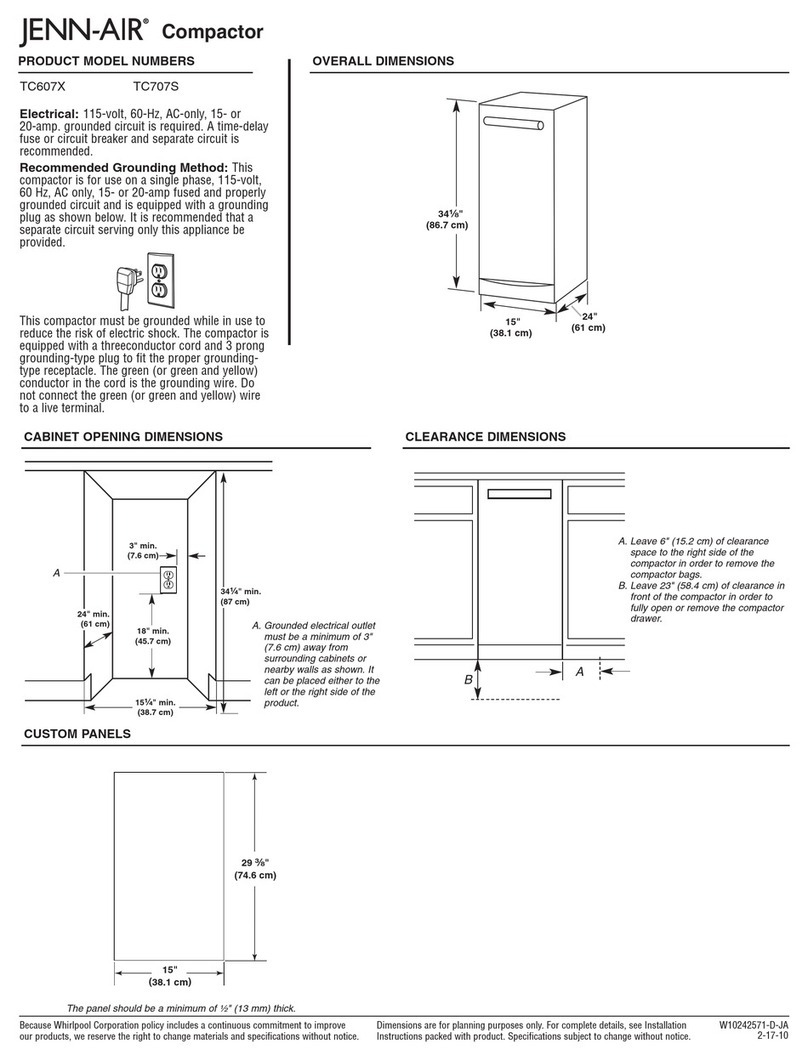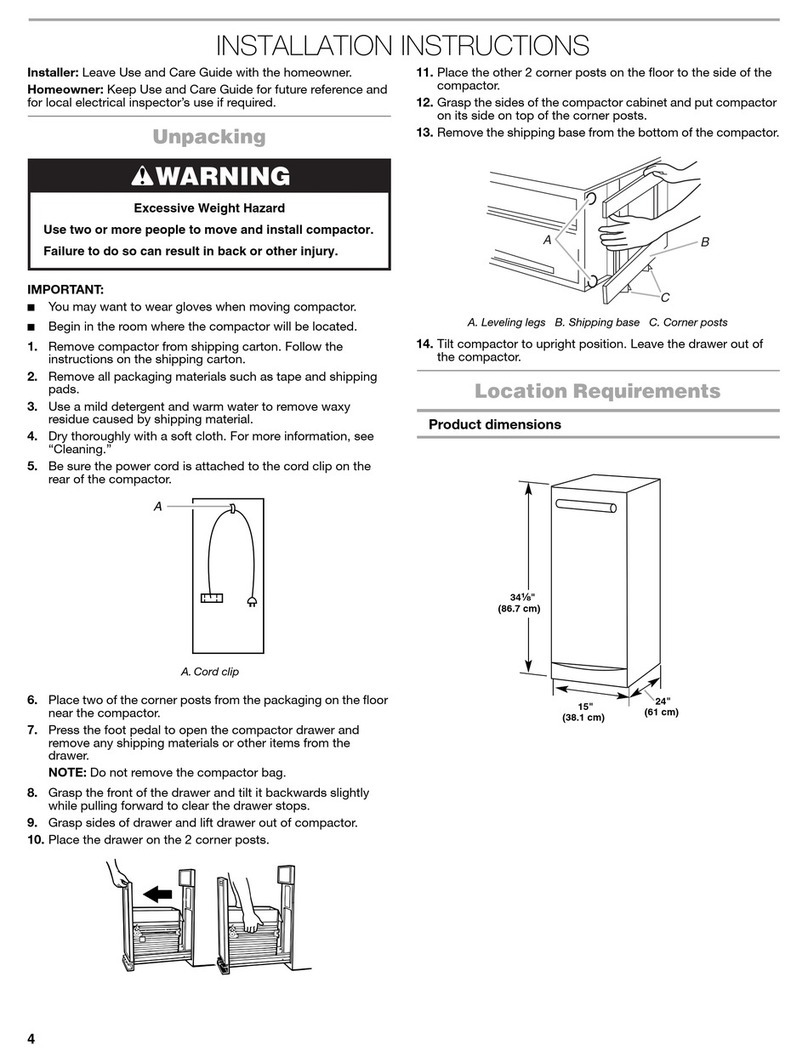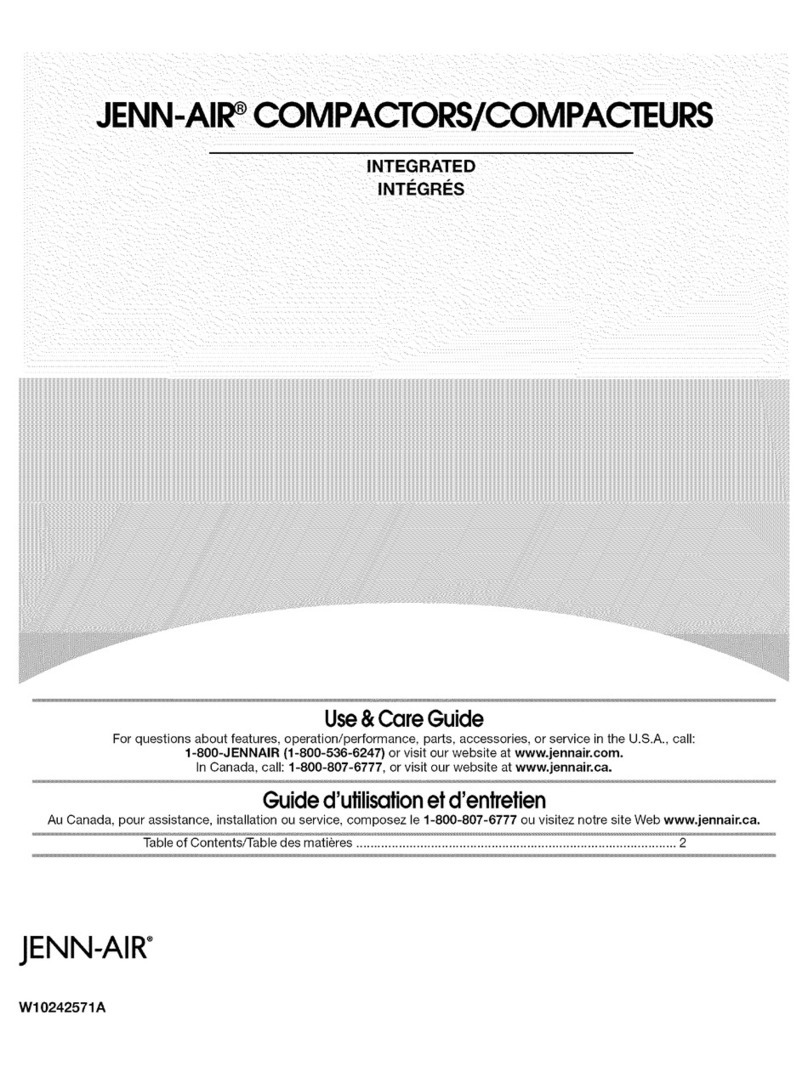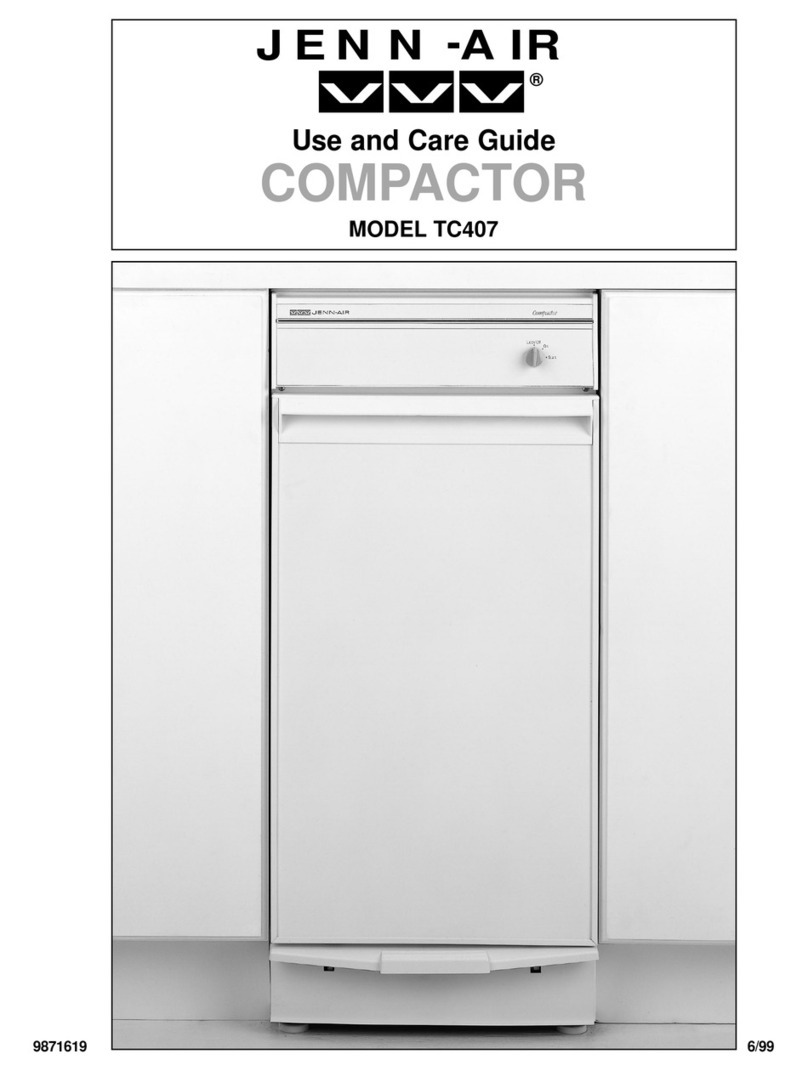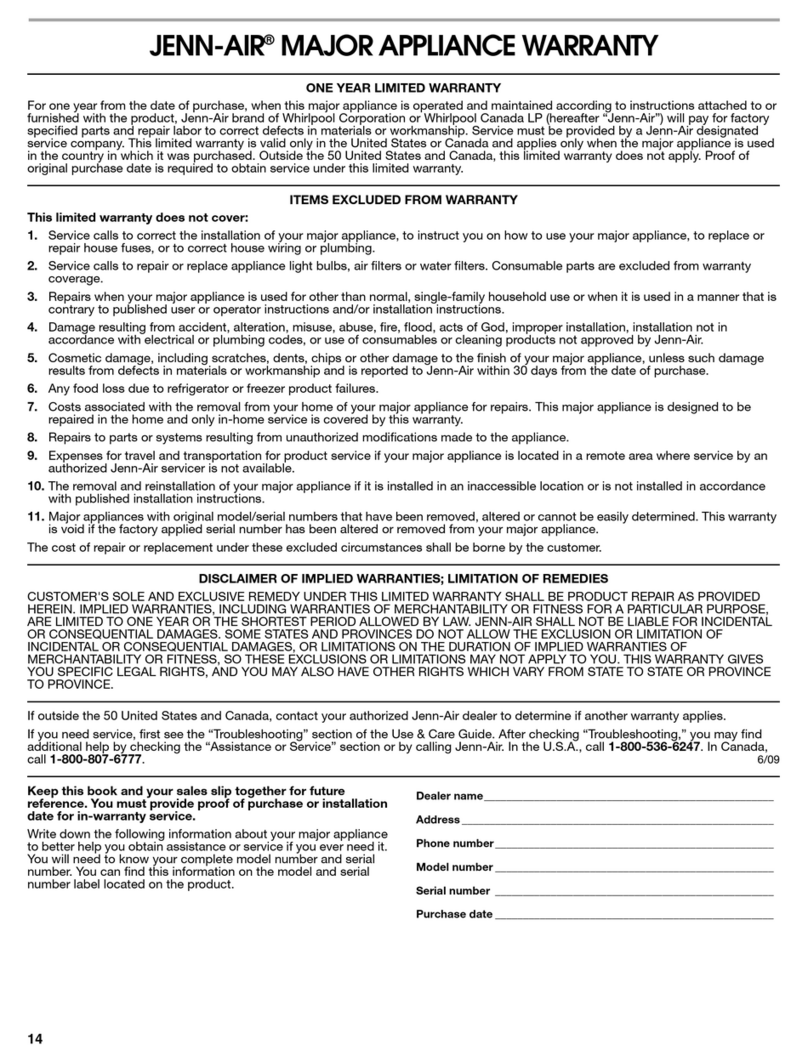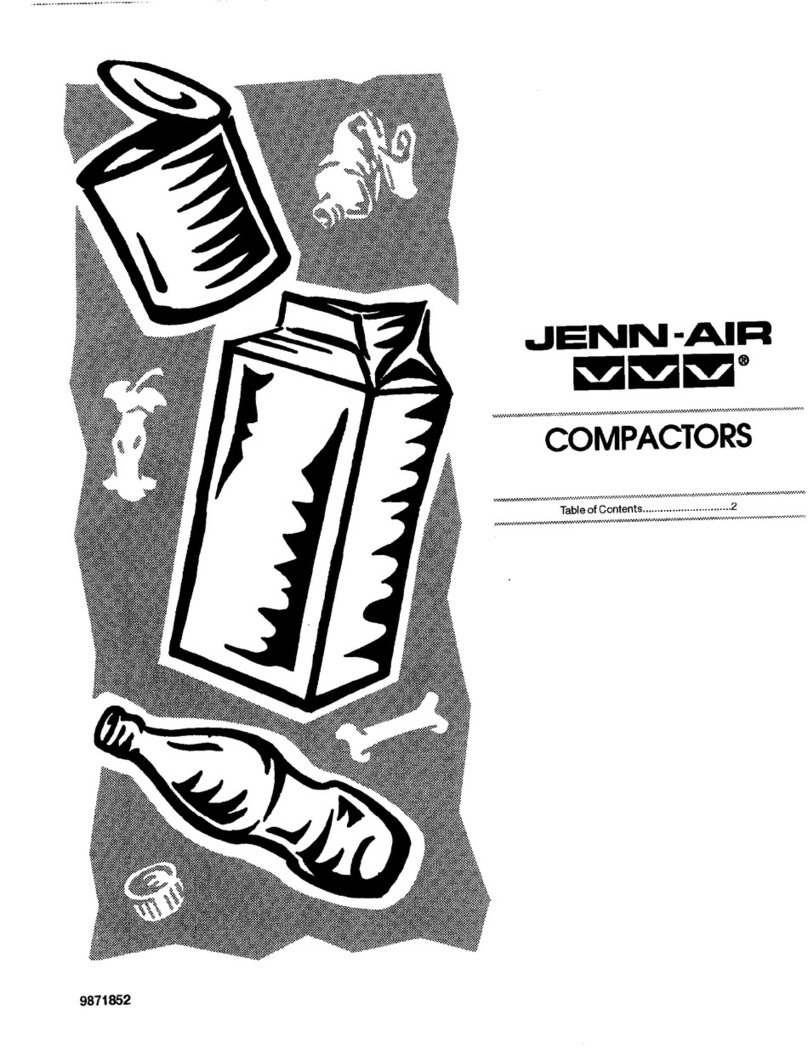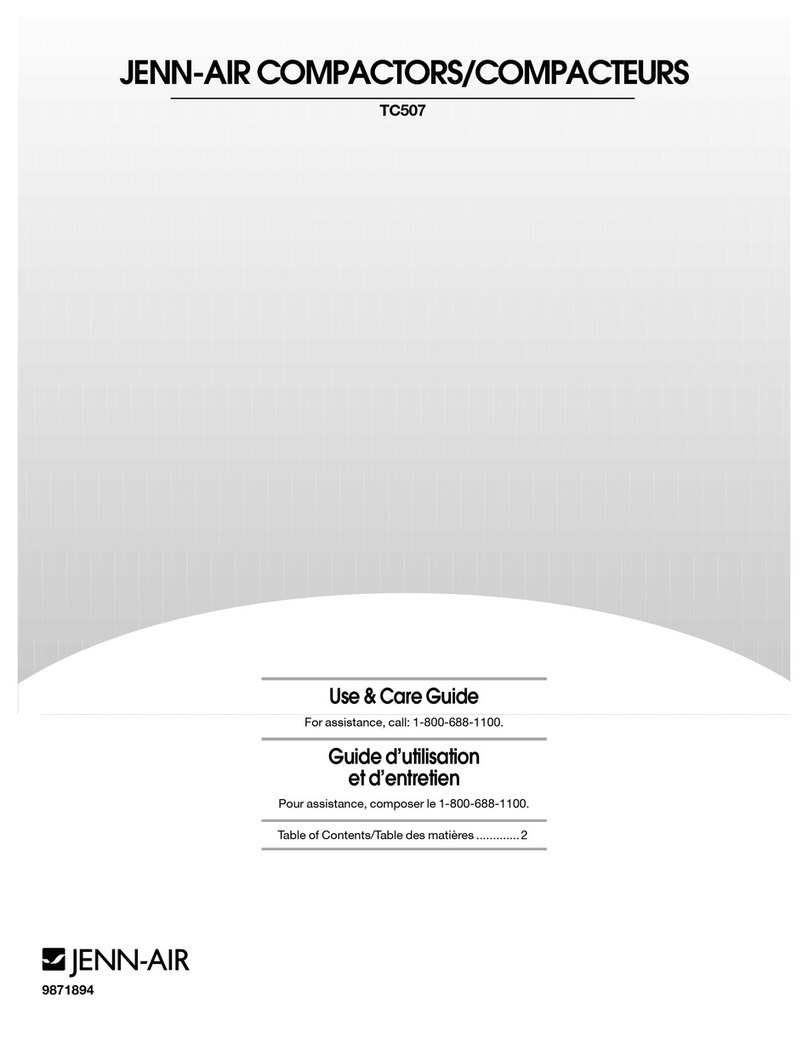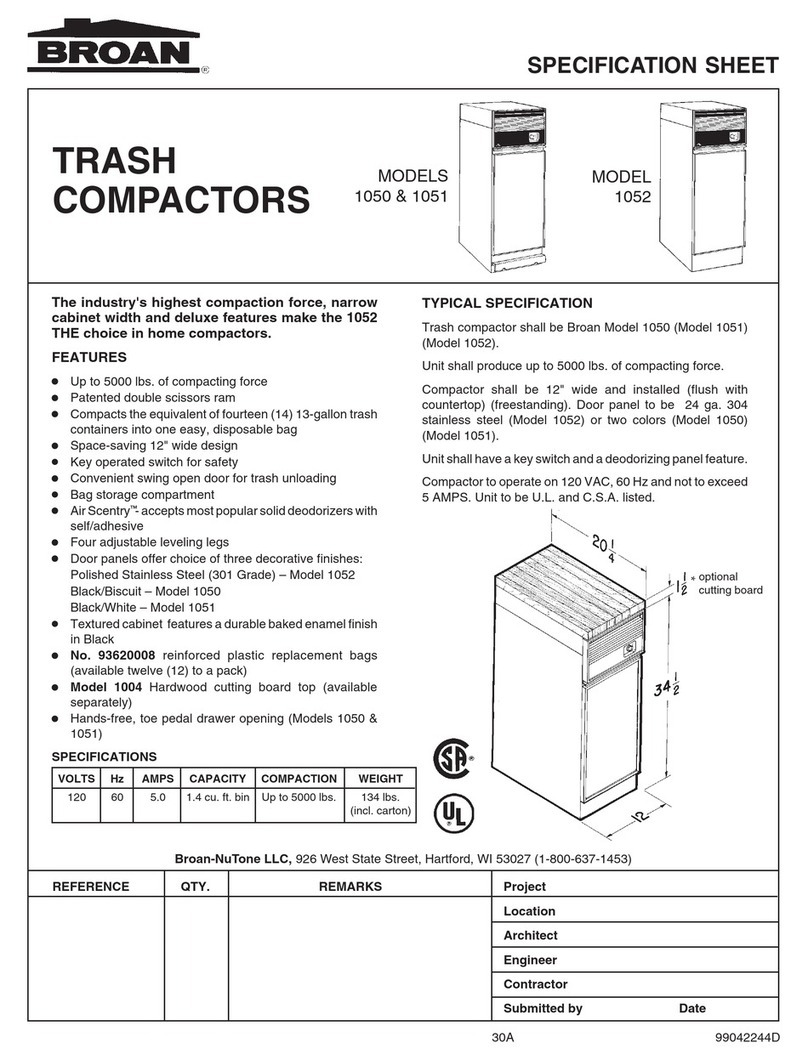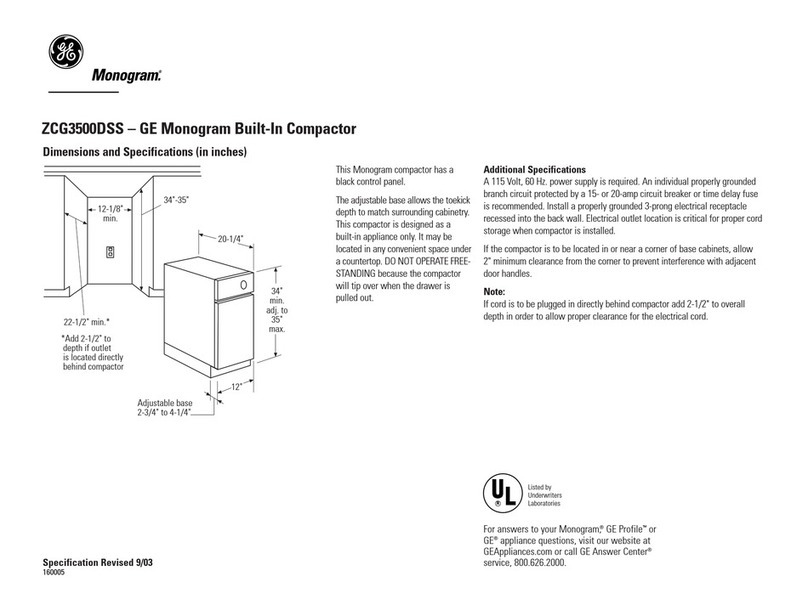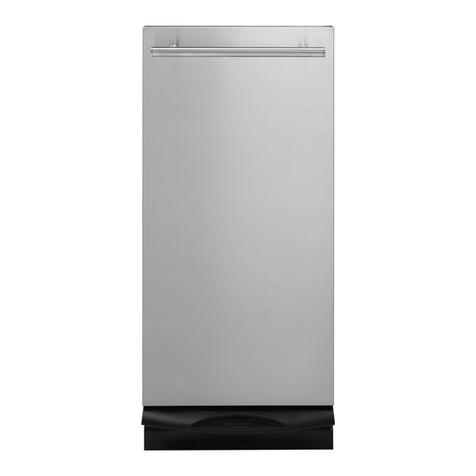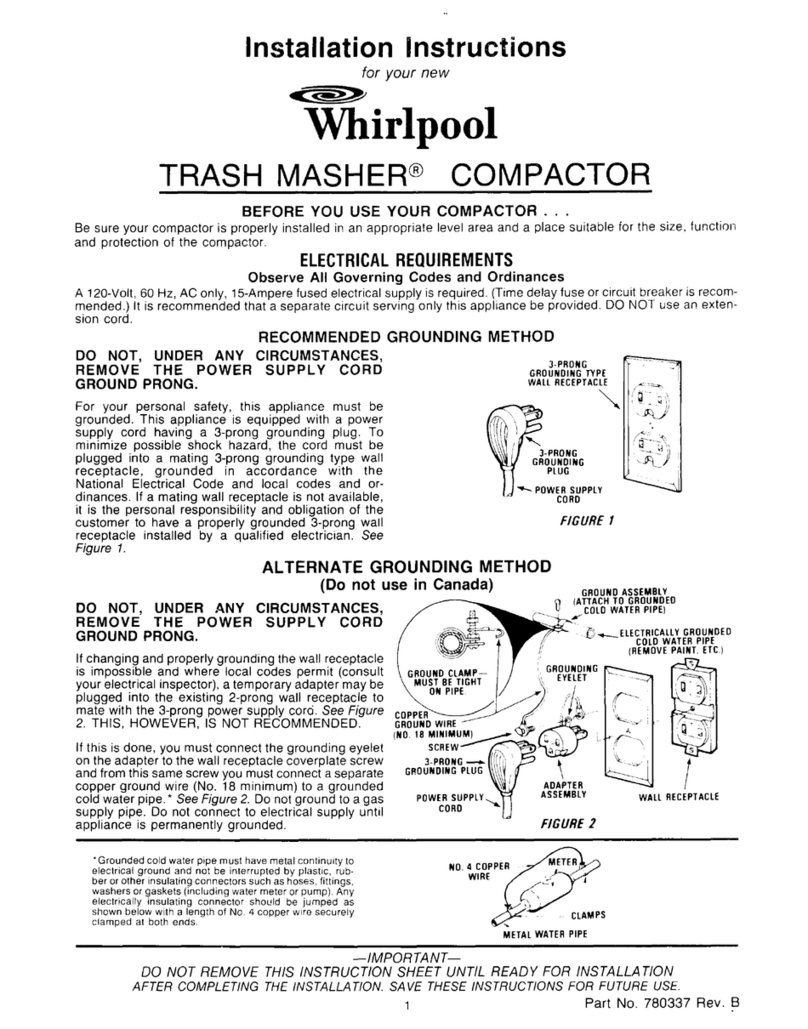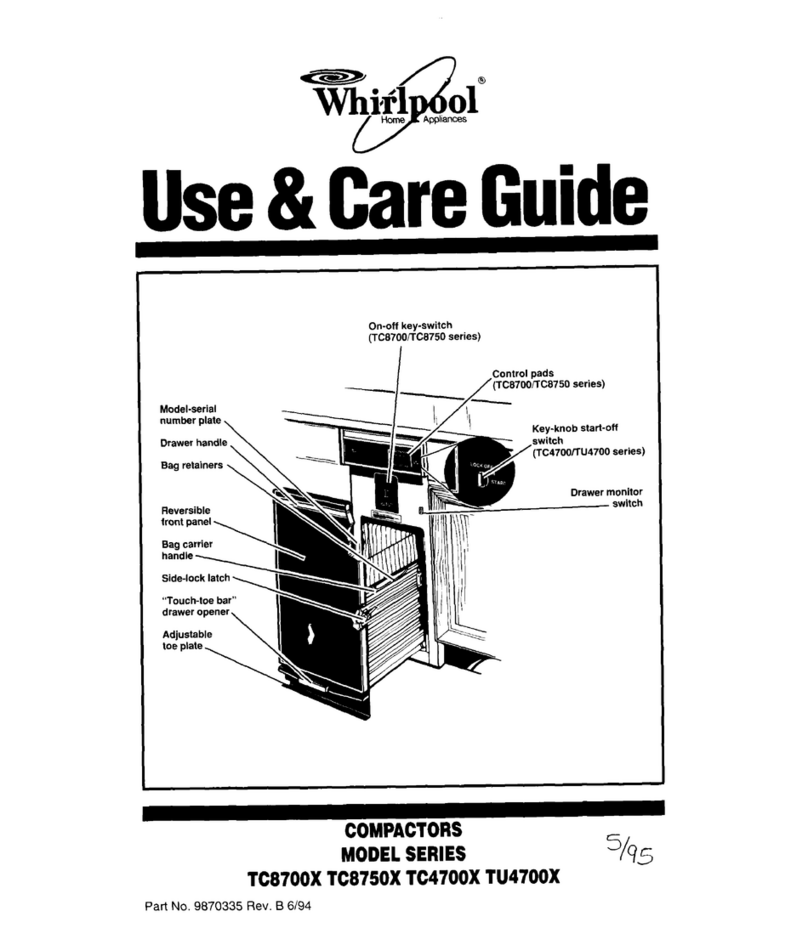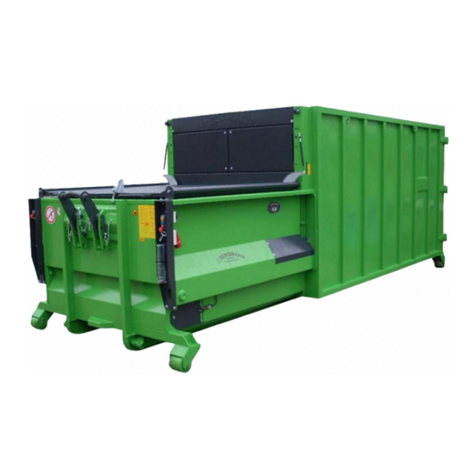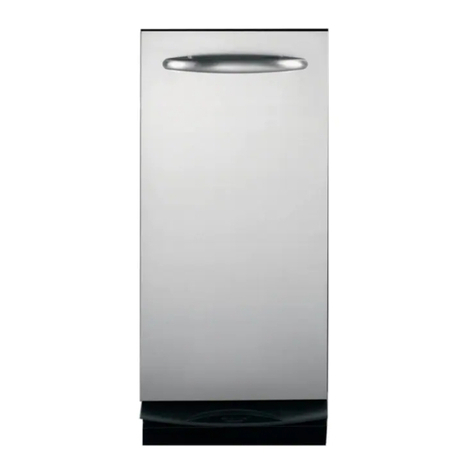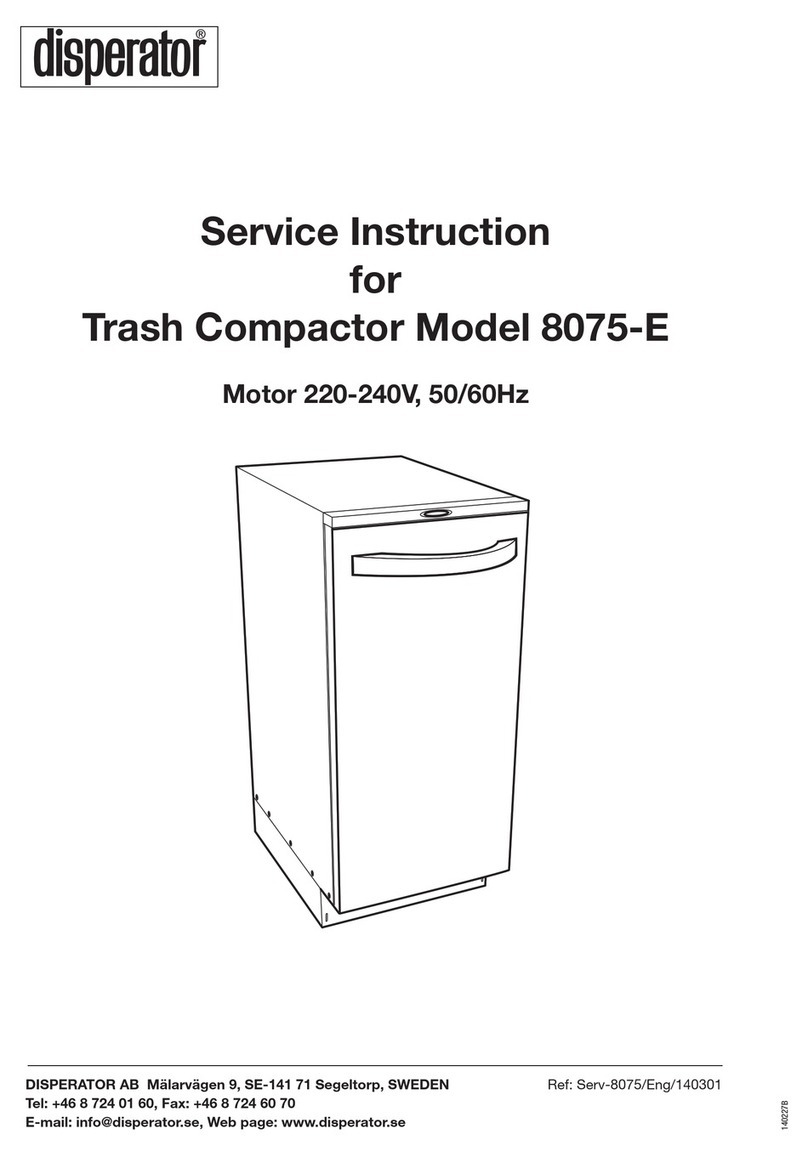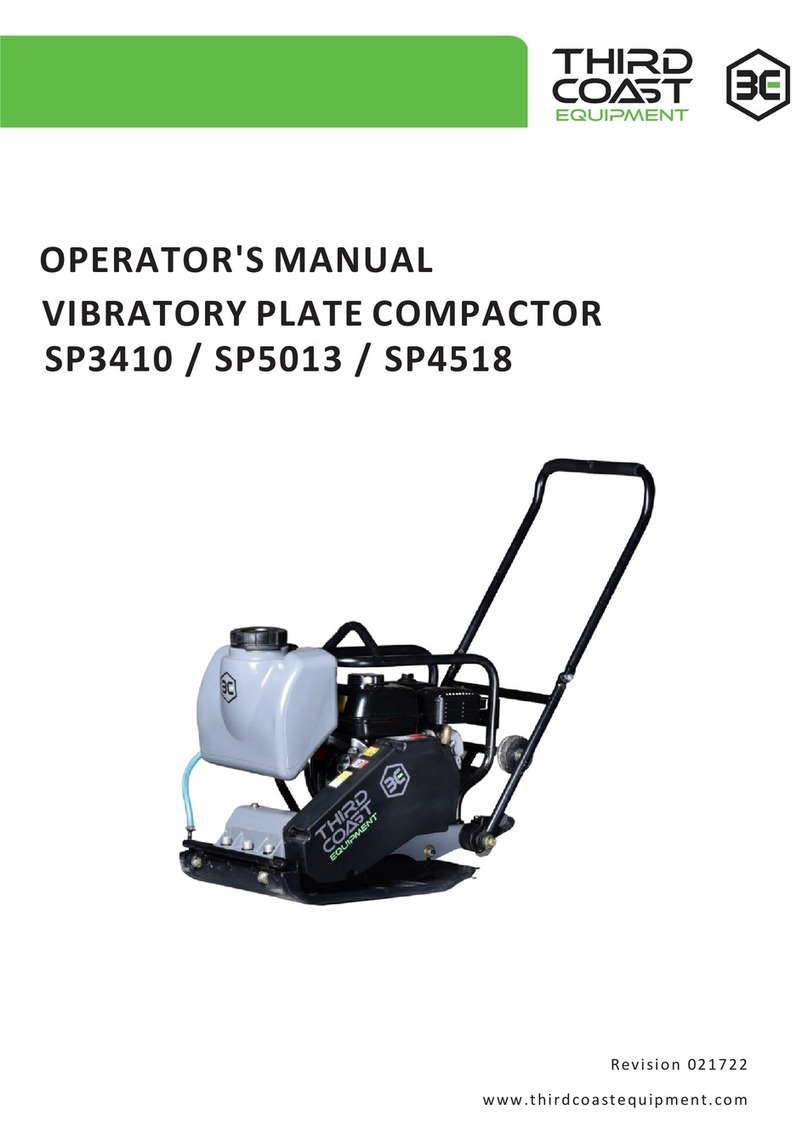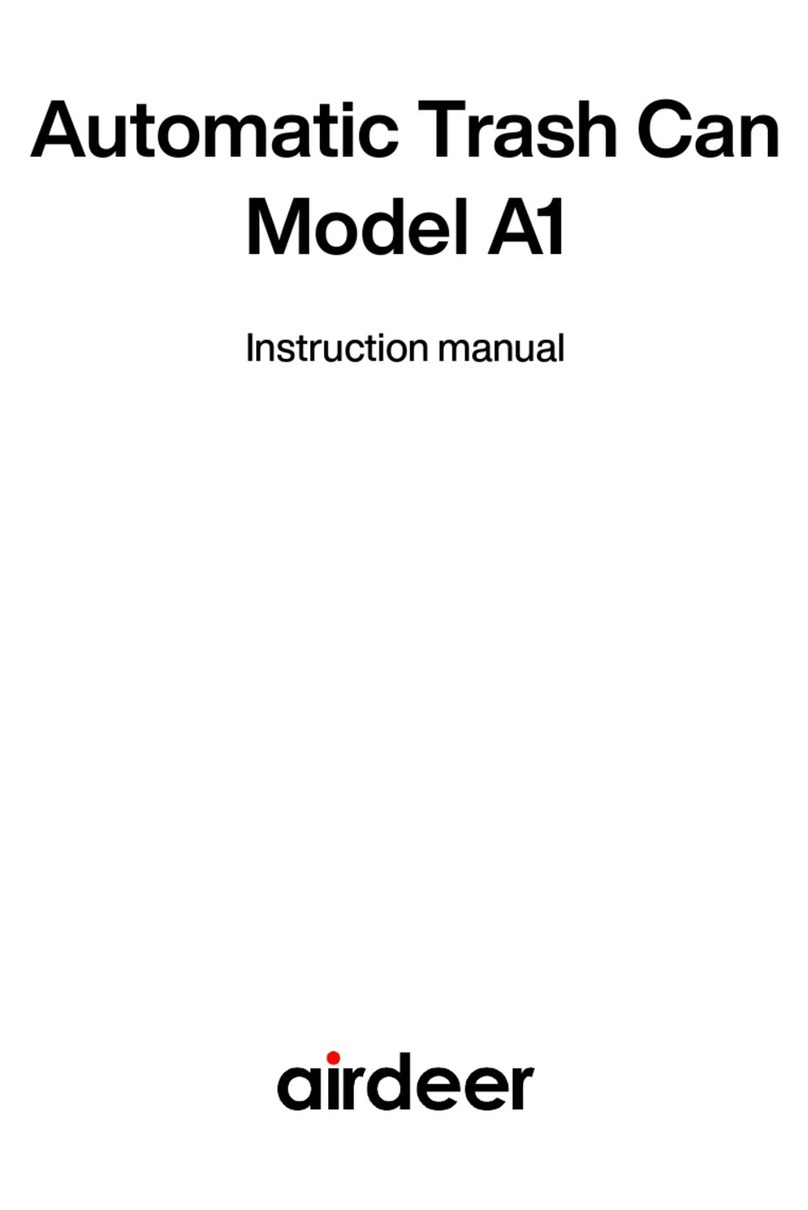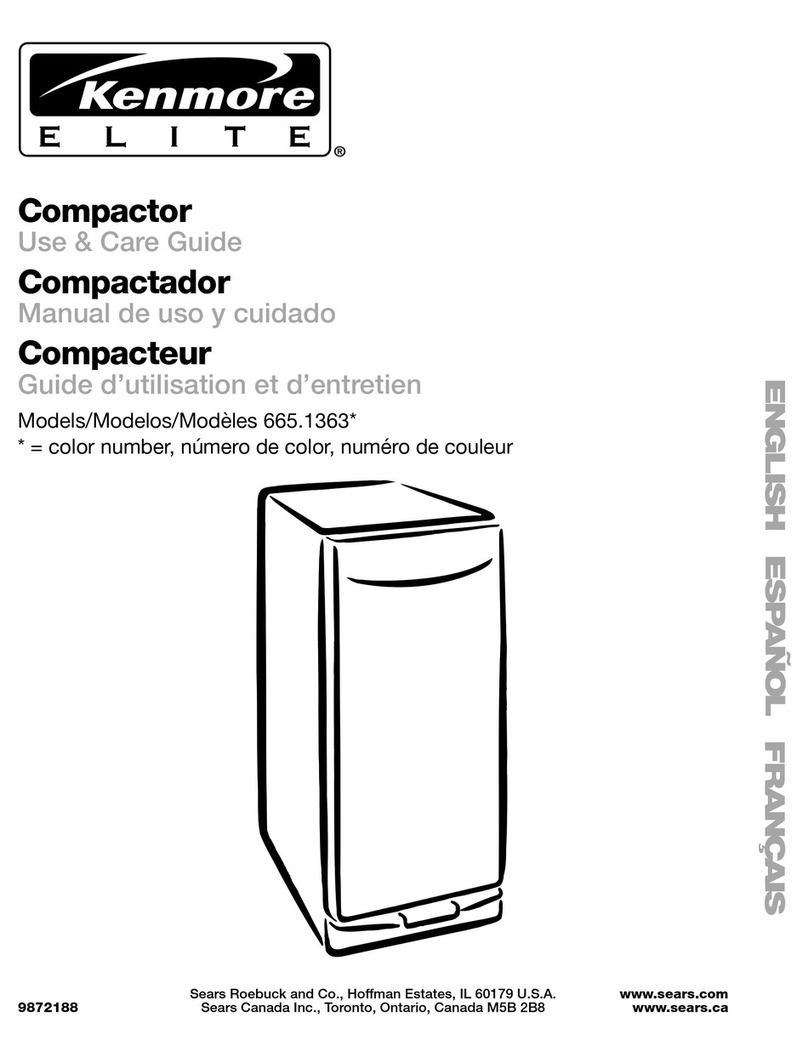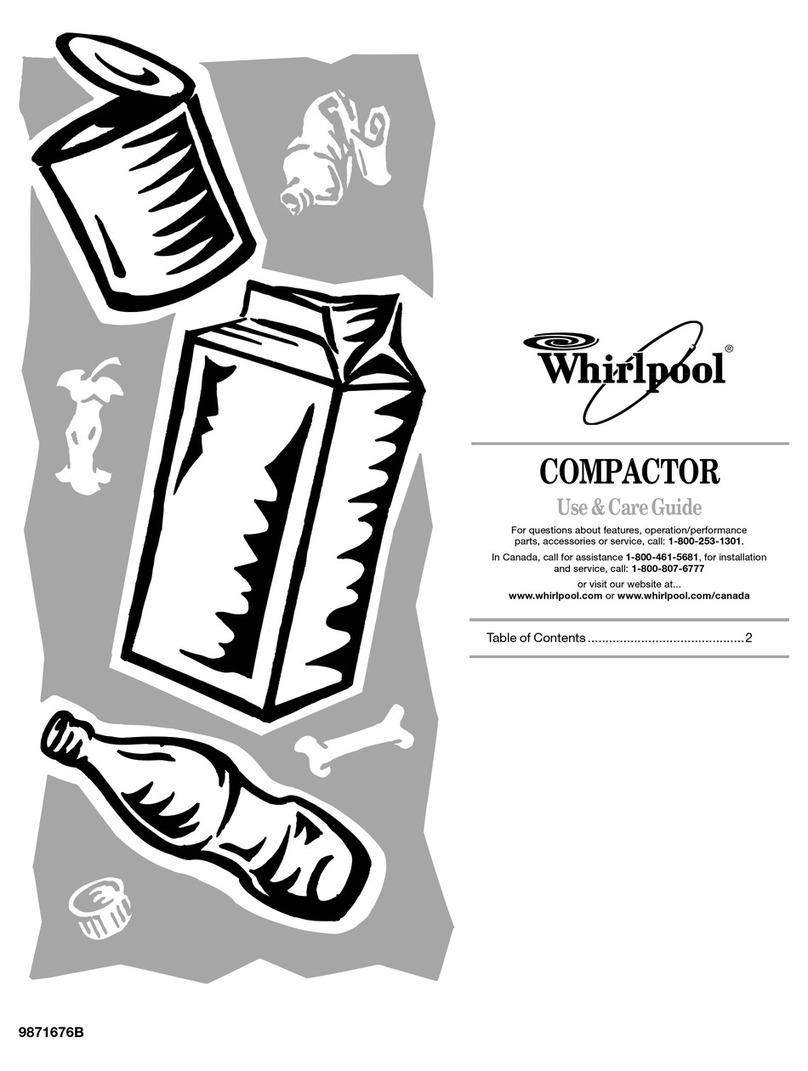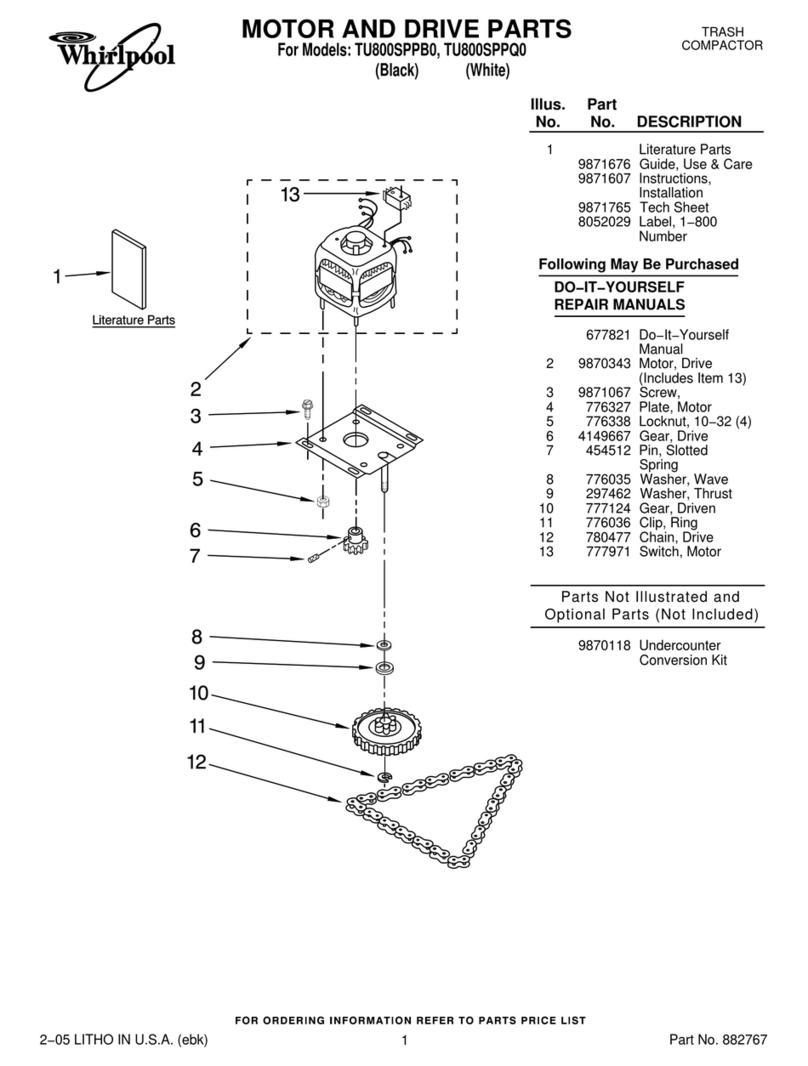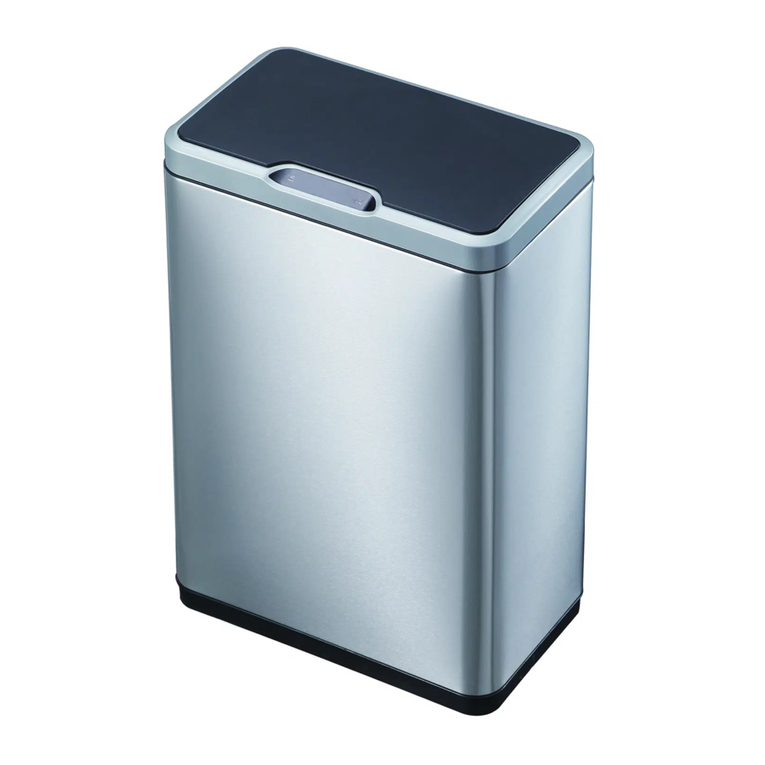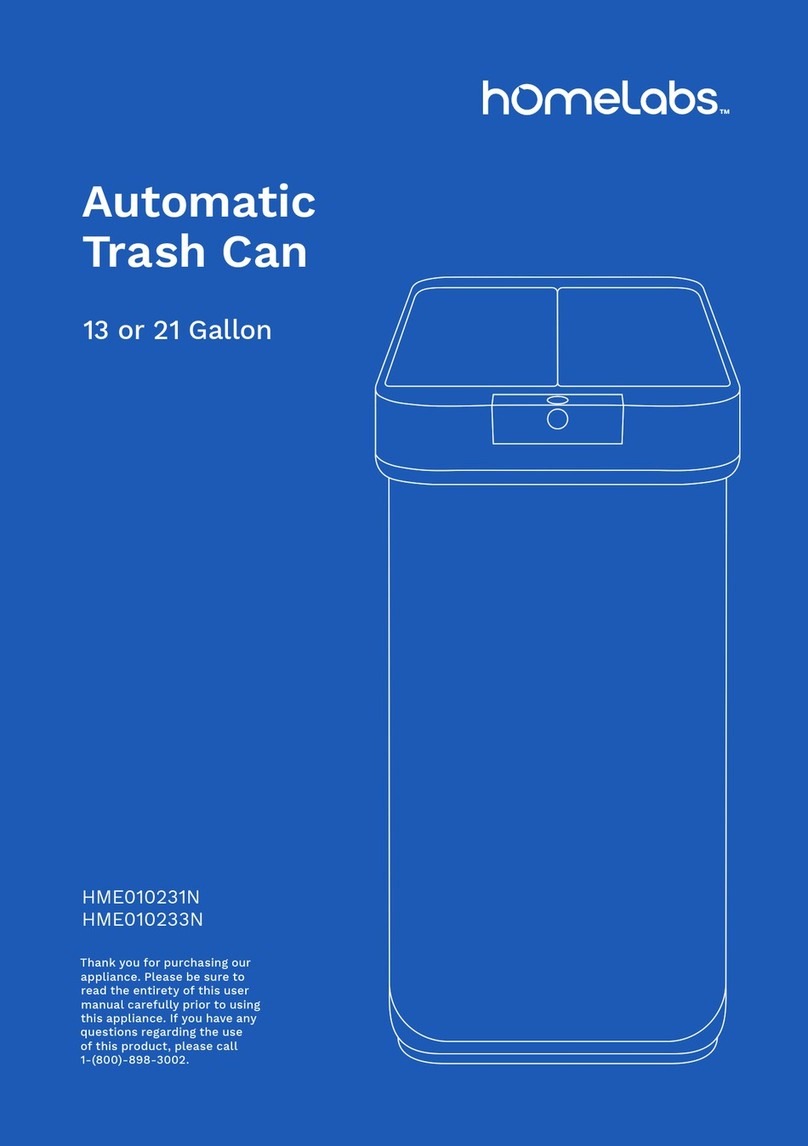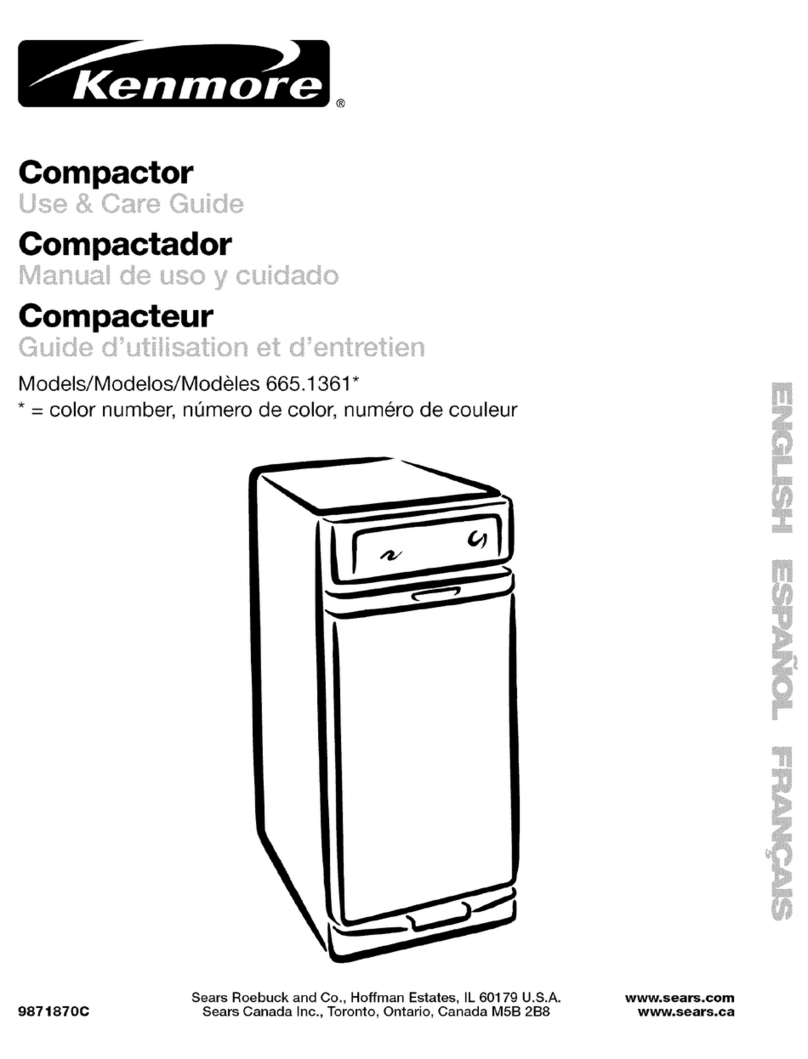
6
Undercounter Installation
NOTE: Proper installation is your responsibility. Make sure you have everything necessary for correct installation. It is the personal
responsibility and obligation of the customer to contact a qualified installer to assure that electrical installation meets all national and
local codes and ordinances.
Tools needed:
Gather the required tools and parts before starting installation.
IMPORTANT:
■Do not grasp control panel to move compactor.
■To avoid damaging floor covering, slide compactor onto
cardboard or hardboard before moving compactor across
floor.
■Do not allow the rear frame of the compactor to touch the
floor covering when lifting or moving compactor.
Undercounter Installation
1. Measure the height of your cabinet opening. The top of the
compactor should be at least ¹₈" (3 mm) from the top of the
cabinet opening.
The rear wheels are preset for a cabinet opening of 34¹⁄₄"
(87 cm). See Position “1”in picture following.
To adjust for other cabinet opening heights:
■Loosen self-tapping screw just enough to clear stud from
hole in Position “1.”
■Move the rear wheel and stud to Position “2”or “3”as
needed for your cabinet opening measurement:
Position “2”: 34¹⁄₄" to 34⁷⁄₁₆" (87 to 87.5 cm)
Position “3”: 34⁷⁄₁₆" to 34⁵⁄₈" (87.5 to 88 cm)
NOTE: To level the compactor in position “3,”you may
need to add shims under the leveling legs.
■Tighten screw. Repeat for other rear wheel.
2. Use pliers to lower leveling legs away from cabinet. Adjust
legs so there will be a ¹⁄₈" (3 mm) to ¹₄" (6.4 mm) space
between the top of the compactor and the top of the cabinet
opening. Stand the compactor upright.
3. Move the compactor close to its final location.
4. Plug into a grounded 3 prong outlet.
5. Determine if you want the compactor frame or drawer front
flush with the cabinet front.
Using the two #8-18 x ⁵₁₆" (8 mm) screws, install the retaining
brackets to cabinet top as needed:
■If the compactor frame is to be flush with the cabinet
front, place retaining bracket screws through “1.”
■If the compactor drawer front is to be flush with the
cabinet front, place retaining bracket screws through “3.”
■If the compactor is to be midway between “1”and “3,”
place the retaining bracket screws through “2.”
6. Slowly lift the front slightly and roll compactor into the cabinet
opening.
Using the two #8-18 x ¹₂" (12 mm) screws, fasten the
retaining brackets to the countertop with the mounting
screws.
Countertop Mounting
If brackets cannot be attached to the underside of
countertop, attach mounting clips to brackets. Fasten
compactor to cabinet front with mounting screws through
mounting clips.
Level Phillips no. 2 screwdriver
Tape measure Flat-head screwdriver
Pliers ⁵⁄₁₆" Box-end wrench
Scissors Utility knife
A. Wheel bracket assembly
B. Cabinet
C. Locating stud
D. Self-tapping screw (pivot)
B
1
2
3
C
D
A
A. Countertop
B. Retaining bracket
A. Countertop
B. Retaining bracket
C. Mounting screw
B
A
1
2
3
A
B
C
